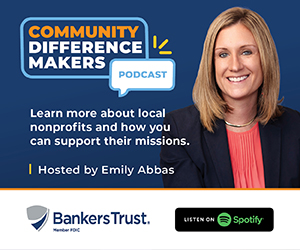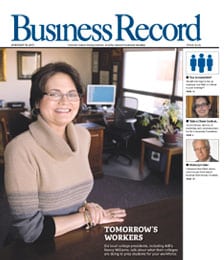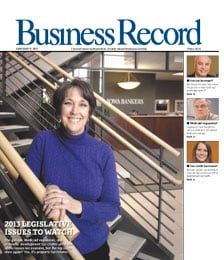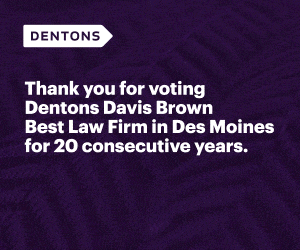Promoting wellness

Many GuideOne Insurance employees are thinking twice about reaching for that cookie in the company cafeteria these days. They just may find themselves getting a bit of ribbing from co-workers who have selected fruit slices and salad.
Several weeks ago, about half of the 600 people who work at the company’s home office in West Des Moines signed up for a “Biggest Loser” competition. Collectively, they’ve already shed more than 1,300 pounds, an average of more than four pounds per person.
Additionally, the majority of GuideOne’s workforce – more than 80 percent of its 800 workers — have indicated they plan to participate in a voluntary health screening program this week through Principal Wellness Co. GuideOne is covering the cost of the tests for those employees insured under its health plan, and as an added sweetener will pay $50 to each employee who participates.
“We really just want people to get a fix on their own health,” said John Roberts, GuideOne’s senior vice president of human resources. A year ago, when the company first offered the screenings through Principal Wellness, about 40 percent of employees participated, he said. This year, ““we’re hoping that we’ll push it even beyond 80 percent.”
GuideOne’s wellness initiatives, which also include activities such as walking programs, Pilates and karate classes and partial reimbursements to employees who purchase fitness equipment, were developed with the input of a 20-member employee wellness committee.
Employers are becoming more aggressive about initiating health screening programs of their employees, said Steve Flood, a senior vice president with Holmes Murphy & Associates Inc. who heads the insurance broker’s employee benefits department in Iowa. “What they’re saying is, ‘We’re going to screen the group and find out where are our major problems, and then introduce programs to make them as healthy as genetically possible.”
Flood said he believes such programs have reached their “tipping point” and that the number of Iowa companies offering them to their employees will likely double or triple within the next year.
As employers increase their scrutiny of workers’ fitness and health habits, however, they may find themselves jogging into unclear legal terrain. As a result, attorneys specializing in employment law are fielding more questions from companies that are considering establishing health and wellness screening programs.
“I think employers have to be careful to ensure that those [programs] are voluntary,” said Helen Adams, a shareholder and member of the board of directors at Dickinson, Mackaman, Tyler & Hagen P.C. “I think a lot of it depends on what they do with the information, if they use it to provide better information to employees or encourage healthier lifestyles. But you can’t use it to discriminate against employees.”
Adams said that to her knowledge, no employees have filed suit in Iowa to challenge the legality of offering lower health premiums to employees who take part in fitness or wellness screening programs, or of claims that workers are being unfairly singled out.
“I’ve heard of cases related to smokers [claiming discrimination in premiums],” she said. “The courts have usually said that smoking is not a protected disability, so they have usually let those go.”
In addition to having a legitimate business reason for having a wellness program, such as lowering health-care costs, employers must also ensure that the program does not discriminate against a particular minority group, Adams said. For instance, a disease that’s prevalent in one minority group cannot be singled out.
Flood said he’s been seeing more employers begin to offer incentives to their workers to participate in health screenings so they can obtain baseline information and monitor the effects various programs have on the group’s overall health.
“I think the hardest thing for employees to understand is they’re not trying to target individual employees,” Flood said, “but trying to reward the group for becoming as healthy as they can be.”
Last year, U.S. Sen. Tom Harkin introduced legislation calling for a 50 percent tax credit for companies that offer comprehensive wellness programs to their employees. The Healthy Lifestyles and Prevention America Act would also provide tax deductions to businesses that subsidize employees’ use of outside fitness centers, and provide grants to small businesses and non-profit organizations to develop worksite health promotion programs.
Harkin spokeswoman Allison Dobson said that comprehensive bill is not likely to move forward this year, given Congress’ backlog in addressing other issues. Now, “our strategy is to pull off pieces of that bill and get them passed individually,” she said. For instance, a separate bill, co-sponsored by Harkin and Sen. John Cornyn, a Texas Republican, would make the amount small business owners pay employees to belong to a fitness center tax-deductible. That measure is designed to provide parity with larger employers with in-house fitness centers that are not taxed for the cost of that benefit.
From Holmes Murphy’s perspective, Principal Wellness currently offers the most comprehensive wellness screening program in Iowa, Flood said.
“Wellmark, UnitedHealthcare and Coventry, none of them have the integrated screening program,” he said. “They all have very good disease management programs once the diagnosis has been made. But none of them are actually doing the on-site screening of all employees. At least they’re not set up to do that as a standard product offering. Nor do they have years of experience with it, whereas Principal Wellness Co. has been doing it for 10 years.”
Once GuideOne employees receive their screening results, they’ll be able to compare their numbers to their results from a year ago and determine how much progress they’ve made from participating in exercise and eating better, Roberts said.
From the company’s perspective, the aggregate screening results will give managers a big picture of the direction of employees’ health, he said.
“We’ll get some idea of percentages of people who are in the normal band versus those who need attention,” he said. “We’re interested in the ones that can lead to large medical costs. Are they aware of diabetes or pre-diabetic conditions, or factors that can lead to heart disease or have weight issues that can lead to health problems? Then we’ll go to our employee committee and see if there are ways we can approach this.”
Roberts said GuideOne’s Biggest Loser contest is one example of a program created in response to last year’s screening results that showed that excess weight was an issue for many employees.
Some workers did voice concerns last year that information collected in the screenings might be used against them, he said. “But we assured them that was not the intent. This year, as we’ve gone into the screenings, we have not heard of any issues.”







